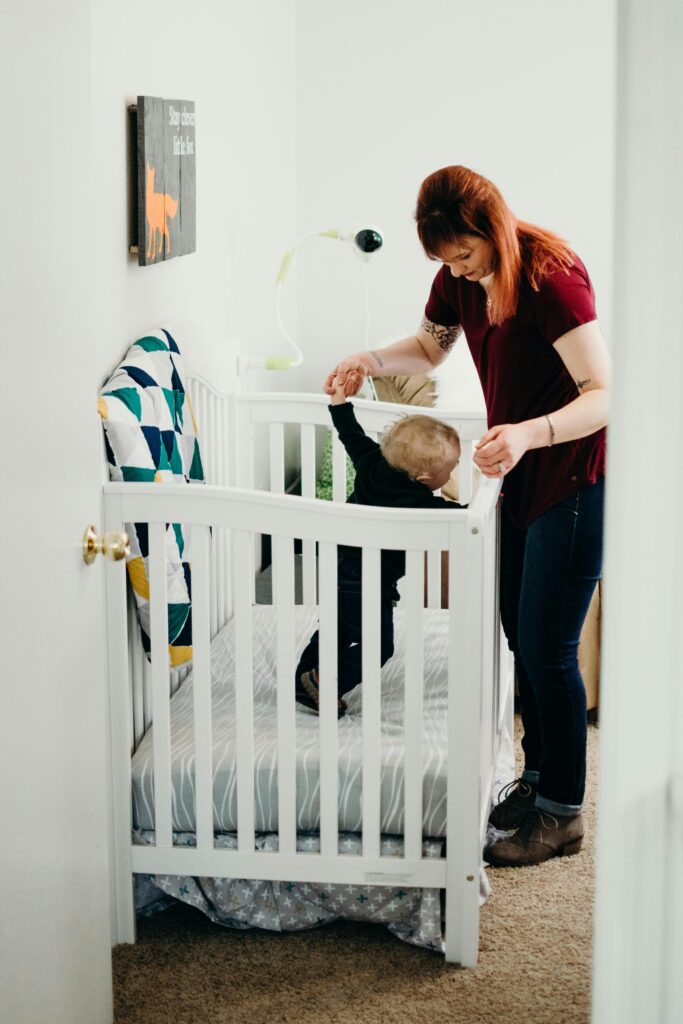
Welcoming a baby into your home is one of life’s most joyous occasions. However, with this joy comes the responsibility of ensuring a safe environment for your little one. As babies begin to crawl and explore, every corner of your home turns into a potential hazard zone. For families living in multi-level homes, staircases present one of the most significant risks. Installing stair gates is not just a precaution, it’s a necessity.
In this blog, we explore how stair gates play a crucial role in baby-proofing a multi-level home, the types available, tips for choosing the right one, and how to use them effectively.
Why Stair Gates Are Essential
Staircases are among the leading causes of injury for toddlers. A single moment of inattention can lead to a fall that results in serious injuries. According to child safety experts, most accidents involving stairs happen during the crawling and walking stages, typically between 6 months and 3 years.
Stair gates create a physical barrier that prevents babies from accessing stairways unsupervised. By restricting access, these gates significantly reduce the risk of falls and give parents peace of mind, knowing their child is safely confined to baby-friendly zones.
Ideal Locations to Install Stair Gates
In a multi-level home, it’s not enough to install just one gate. Here’s where stair gates are typically essential:
- Top of the Stairs: This is the most dangerous spot. A secure gate here is critical to prevent a baby from tumbling down.
- Bottom of the Stairs: A gate here stops your child from climbing upward, which can be just as risky.
- Other Hazard Zones: Consider using gates to block off areas like the kitchen, home office, or bathroom.
Types of Stair Gates
Not all stair gates are created equal. Based on the design of your home and your needs, you can choose from several types:
1. Hardware-Mounted Gates
These are permanently attached to walls or stair banisters using screws. They are the safest option for the top of stairs as they cannot be pushed out of place. While installation requires tools and may leave marks, their stability makes them ideal for high-risk areas.
2. Pressure-Mounted Gates
These gates use tension to stay in place and don’t require any drilling. They are best for areas where falling hazards are minimal, such as between rooms or at the bottom of the stairs. However, they should not be used at the top of stairs due to the risk of being dislodged.
3. Retractable Gates
These gates roll out from one side and are often made from mesh or fabric. They are discreet and space-saving when not in use. However, they may not be as strong as traditional gates and are best suited for less risky zones.
4. Auto-Close Gates
Equipped with a spring mechanism, these gates close automatically after opening. This added feature is convenient for busy parents who may forget to shut the gate manually.
Choosing the Right Stair Gate
When selecting a stair gate, consider the following factors:
- Width of the Opening: Measure the area you want to block. Some staircases are wider or narrower than standard sizes, requiring adjustable or custom gates.
- Height: Choose a gate that your child cannot easily climb over. Most standard gates are about 30 inches tall.
- Material: Gates are made from wood, metal, or plastic. Choose a material that complements your home’s interior while ensuring durability.
- Ease of Use: Look for gates that adults can open easily but are secure enough to keep toddlers out.
- Certifications: Always choose gates that meet safety standards like JPMA or ASTM certifications for peace of mind.
Installation Tips
- Top of the Stairs: Always use hardware-mounted gates here. Install the gate directly to the wall or to newel posts with proper anchors.
- Bottom of the Stairs: Pressure-mounted gates can work, but ensure they’re securely positioned.
- Banisters: Use special installation kits if you’re attaching gates to banisters without drilling.
- Avoid Trip Hazards: Choose gates without bottom rails across the floor, especially for the top of stairs, to prevent adults from tripping.
Maintenance and Safety Checks
Once installed, stair gates need regular checks to ensure ongoing safety:
- Inspect Latches: Make sure the locking mechanism works smoothly and securely.
- Check Pressure: For pressure-mounted gates, ensure they haven’t loosened over time.
- Watch for Wear: Replace gates if any parts break, crack, or show signs of fatigue.
- Adjust as Needed: As your child grows, their abilities change. A gate that worked at 6 months might need upgrading when your toddler becomes more agile.
Transitioning Beyond Stair Gates
While stair gates are essential for babies and toddlers, they are not a permanent fixture. Most children no longer need gates after the age of 2–3 years, once they have gained a good sense of balance and stair safety. However, until your child demonstrates consistent, supervised stair navigation, it’s best to keep gates in place.
Additional Tips for Baby-Proofing Staircases
- Install Handrails: As your child begins to walk up and down stairs with assistance, having sturdy handrails can support them.
- Keep Stairs Clear: Remove toys, shoes, or clutter that could cause tripping.
- Use Non-Slip Treads: If your stairs are wooden or slippery, consider adding non-slip pads or carpeting.
- Teach Stair Safety: Use moments during supervised stair use to teach your child safe habits, like holding the railing and taking one step at a time.
Conclusion
In a multi-level home, stair gates are more than just a safety product, they are a parenting essential. By strategically installing the right type of gate, you can significantly reduce the risk of falls and accidents. Whether you choose a hardware-mounted gate for the top of the stairs or a pressure-mounted gate for room-to-room security, the key is to match the product to the specific needs of your space and your child.
Baby-proofing your home doesn’t need to be overwhelming. With a well-thought-out plan and quality stair gates, you’ll create a safe and nurturing environment that allows your little one to explore, grow, and thrive.


